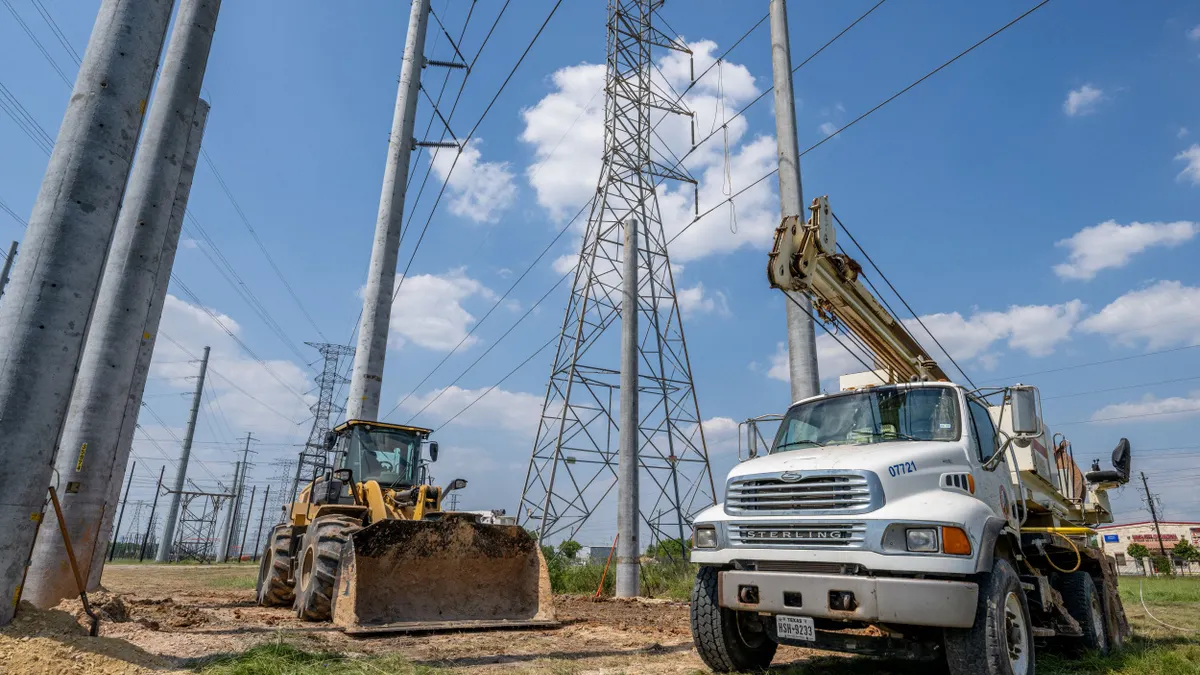The Federal Energy Regulatory Commission should require the creation of independent transmission monitors, or ITMs, to help oversee transmission planning and spending, state and consumer advocates said Thursday during a technical conference on managing transmission costs.
The conference comes as annual utility transmission spending grew to $40 billion in 2019, up from $9.1 billion, in 2019 dollars, in 2000, according to a March 2021 report by the Energy Information Administration.
That spending is expected to grow as utilities and transmission companies build power lines to connect renewable energy resources to the grid.
FERC needs to make sure new transmission facilities are the most cost-effective options and are built with cost discipline, FERC Commissioner Allison Clements said during the meeting.
However, many transmission projects are built with scant oversight, according to panelists at the meeting.
About 63% of transmission investment in California over the last three years was on “repair and replacement” projects that are self-approved by the state’s three major investor-owned utilities, said Simon Hurd, program and project supervisor for the California Public Utilities Commission’s energy division. Those projects fall outside local or regional transmission planning, according to Hurd.
The combined FERC-jurisdictional transmission rate base for California’s three largest transmission owners — Pacific Gas & Electric Co., Southern California Edison and San Diego Gas & Electric Co. — has soared to $22.4 billion, including pending rate requests, from $4.6 billion in 2008, Hurd said in testimony filed at FERC.
The review of transmission planning and spending varies by state, panelists told FERC. Some states don’t review projects below certain kilovolt thresholds, while states like Indiana don’t review them at all, according to panelists.
Among the Midcontinent Independent System Operator’s 15 states, only the Wisconsin Public Service Commission has a transmission expert on staff, said Sarah Freeman, chair of the Organization of MISO States and an Indiana Utility Regulatory Commission commissioner.
An ITM could help fill that oversight gap, according to Kent Chandler, Kentucky Public Service Commission chairman. “For many of these projects, it may be the only real set of eyes that's looking at the need and the planning,” Chandler said.
Besides an “information asymmetry” between transmission owners and people trying to understand their plans, states and others don’t have the expertise to assess the information that is available, according to Greg Poulos, executive director of Consumer Advocates of the PJM States. An ITM could help provide that expertise, he said.
James McLawhorn, the North Carolina Utilities Commission’s energy division director, echoed Poulos.
“We simply do not have the expertise on staff,” McLawhorn said. “We desperately need something like an [ITM].”
New England states appear to face a similar issue.
“Our states … don’t have the resources to contribute as much as they would like” to transmission planning, Robert Ethier, ISO New England, vice president for system planning, said. “We think they should have a very big role, going forward, in deciding how the transmission system gets expanded to meet their policy goals, but … they don’t have the technical resources to engage more actively in helping us design what the future ought to look like.”
Some panelists opposed or were lukewarm to the ITM concept.
FERC, states and grid operators are already “on the beat” overseeing transmission development, according to Jon Schneider, a Stinson partner representing the Large Public Power Council. An ITM may not provide additional value, he said.
Southern Co.’s transmission development is already adequately overseen by state regulators and through a regional transmission process, according to Jeff Burleson, environmental and system planning senior vice president at the Atlanta-based utility company.
Many panelists supported some form of an ITM, however.
“If the current [transmission] planning process is perfect, an ITM will validate that, and so if you object to it, the implication seems to be you are worried the skeletons will come out of the closet,” said Joshua Macey, University of Chicago assistant professor of law.
Further, a failure to adequately focus on transmission cost management could set back the shift away from fossil-fueled generation, according to Philip Bartlett II, Maine Public Utilities Commission chairman.
“We will lose the public if we are not doing the work of making it very open, transparent and accountable, because if costs spiral upward, and they don't have that confidence, we will be dead in our tracks in terms of trying to make this transition,” Bartlett said.
At the end of the daylong meeting, FERC Chairman Richard Glick said there appear to be regulatory gaps in transmission oversight between FERC, states and grid operators as well as informational gaps.
FERC has issued proposed rules this year governing transmission planning and cost allocation and generation interconnection, Glick said, adding that more transmission proposals may be coming.























